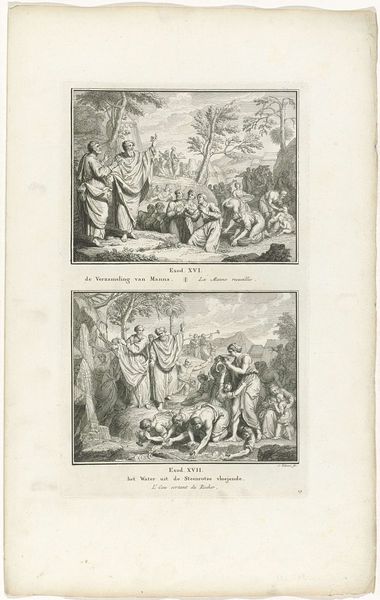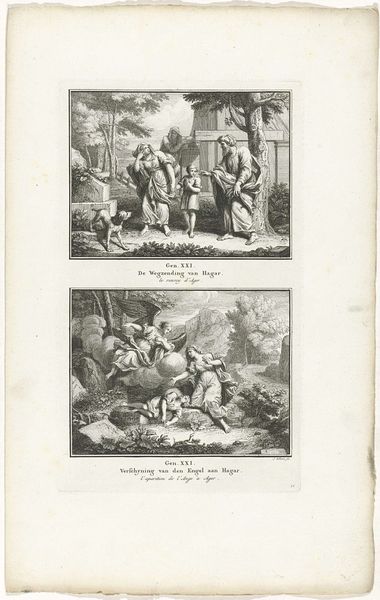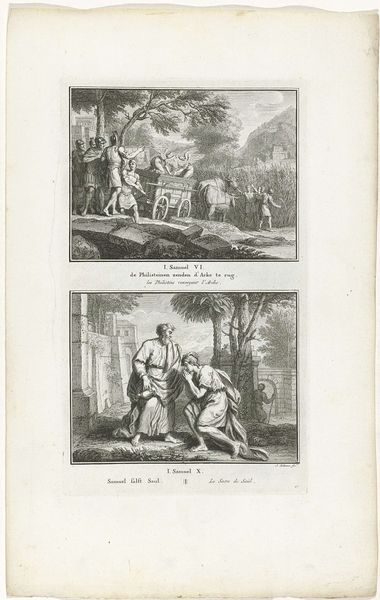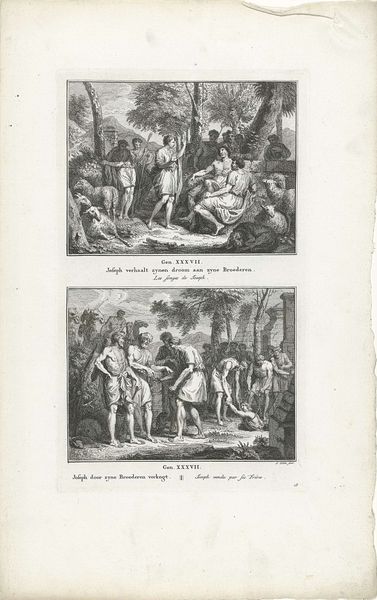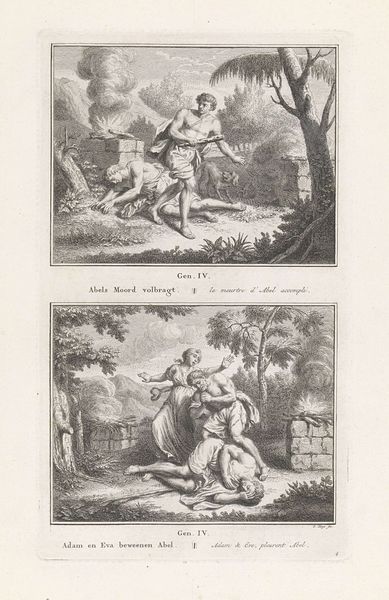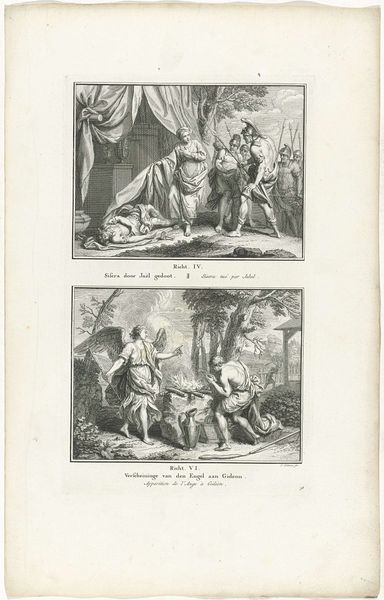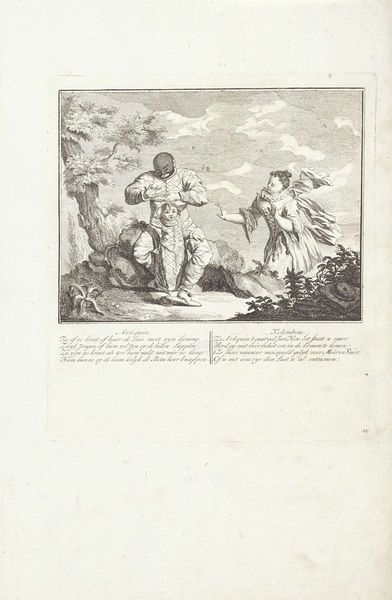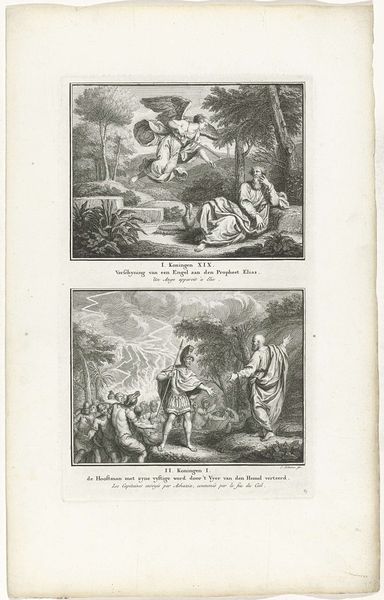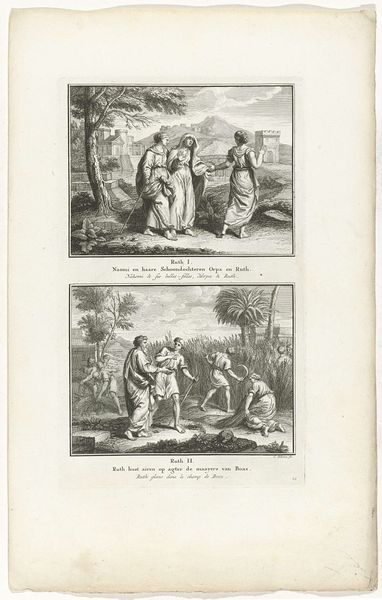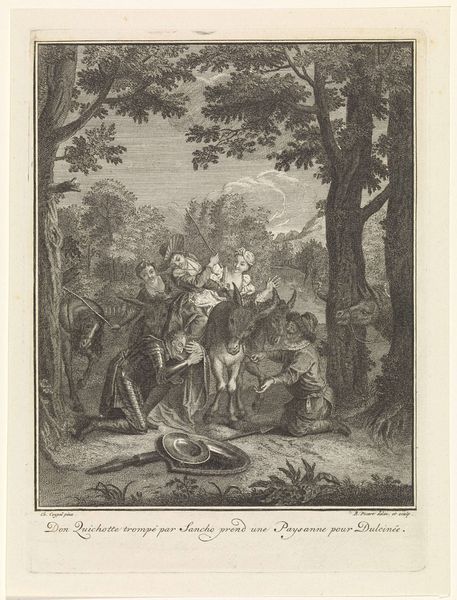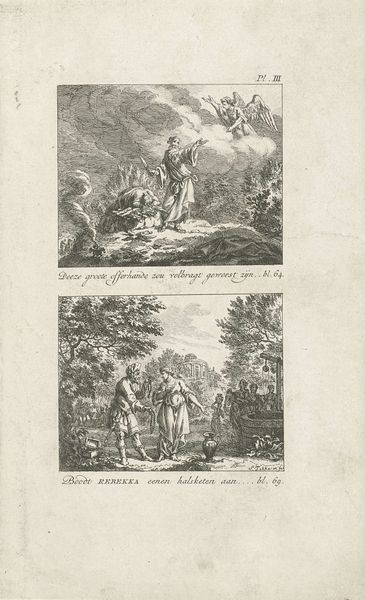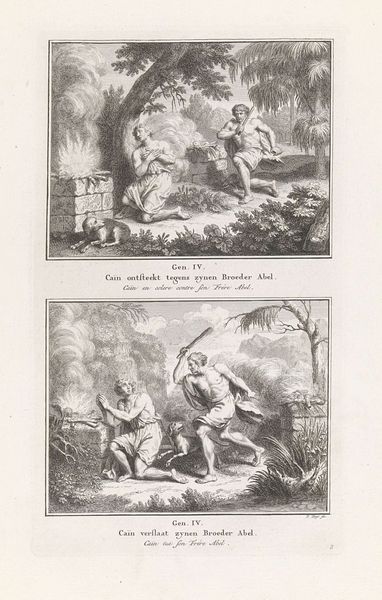
Dimensions: height 325 mm, width 194 mm
Copyright: Rijks Museum: Open Domain
Curator: Welcome! Today, we are observing a 1791 engraving by Jacob Folkema entitled "Offer van Manoach en Simson doodt de leeuw," held here at the Rijksmuseum. It depicts two scenes from the biblical story of Samson. Editor: The stark contrasts immediately create a dramatic tension, don’t they? The scenes are bisected, one ethereal and the other quite…visceral. There's a power dynamic visually encoded here that strikes me as incredibly compelling. Curator: Precisely! In the upper register, we see Manoah and his wife witnessing an angel ascending to heaven after their offering, a theophany representing divine intervention. This symbolises hope and divine favor within the narrative. Note the compositional use of clouds and upward motion. Editor: And below, Samson confronts the lion, embodying the raw strength divinely bestowed upon him. The lion is less bestial and more like another "Other" to overcome, given Samson's narrative positioning in colonial discourse and questions of power. Curator: Samson himself is a layered figure. He embodies both divine favor and human frailty. Consider how Folkema uses line and shading. What do you interpret about the relationship of the line weight between angel and lion, divine versus beastial? Editor: The contrast underscores the patriarchal structures embedded in the story—Samson as the hyper-masculine deliverer ordained by a divine, yet very male, power. It also points to the social mandate implicit within such figures as chosen. And then his acts of violence enacted on "others"— lions or Philistines. Curator: You've contextualized Folkema's work compellingly, reminding us of its lasting, if sometimes troubled, echoes in art and thought. I notice here the compositional similarity between the angle rising to the clouds with his arms extended, mirrored below with Samson’s arms raised facing the lion. Editor: Absolutely. Looking closely, these lines can make us consider the different social structures at play, reflecting upon its place in wider societal narratives about power, agency, and faith. I’m also noticing how Folkema portrays a very human and emotional reaction in Manoah and his wife. Curator: Indeed, capturing both their awe and humility before the divine—or considering your points, editor, how carefully constructed is it and how do its underlying patriarchal values surface to this very day? A compelling question that, of course, shifts in different cultural contexts, yet maintains this very rigid line about right versus wrong, as decided by men in power. Editor: Ultimately, what strikes me most is how effectively this engraving distills those layered meanings.
Comments
No comments
Be the first to comment and join the conversation on the ultimate creative platform.

